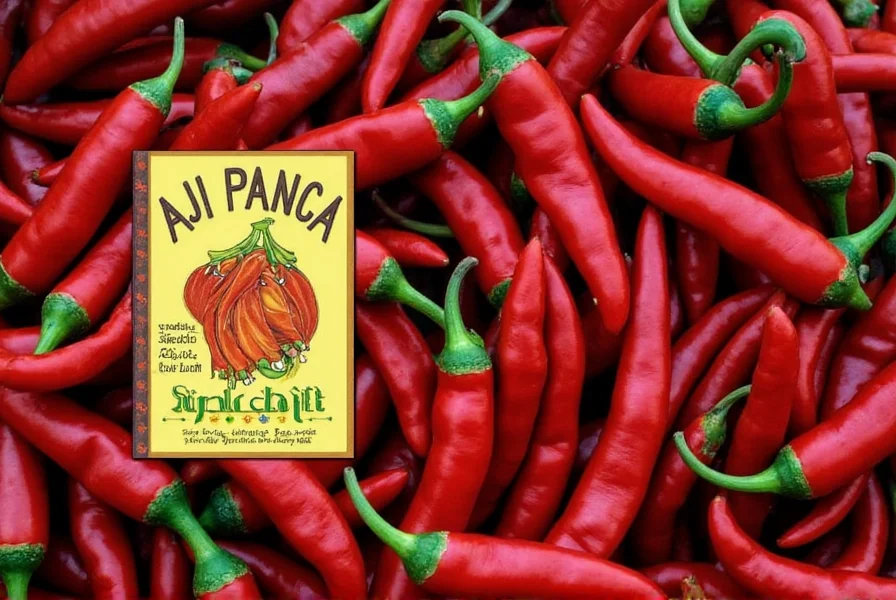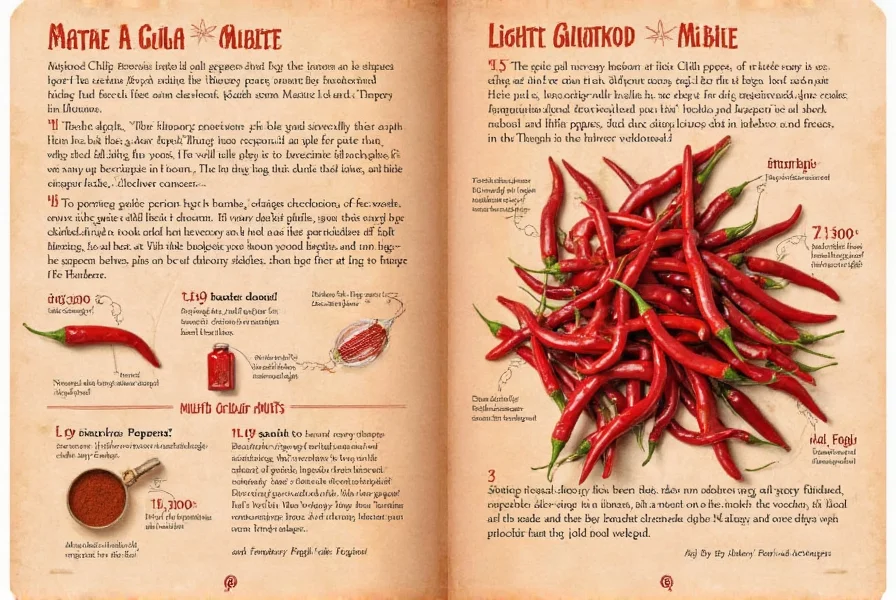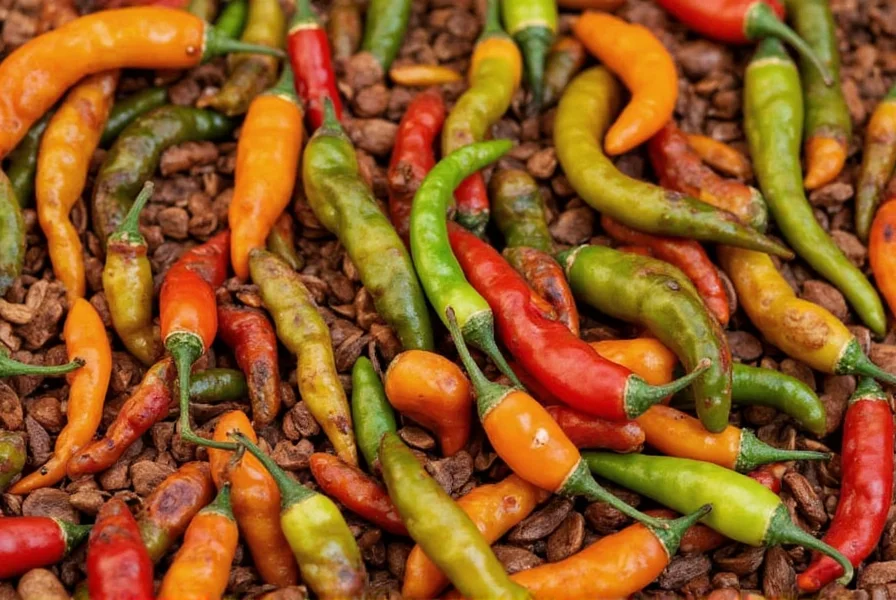Table of Contents
Introduction to Aji Panca Chili Peppers
Aji Panca chili peppers are a beloved ingredient in Peruvian cuisine, prized for their sweet, smoky flavor and mild heat (1,000–5,000 Scoville Heat Units). Originating from Peru, this versatile pepper is used in dishes ranging from ceviche to stews. With a Scoville rating of 1,000–5,000, it offers a gentle kick without overwhelming spice, making it ideal for both beginners and experienced cooks.
The Flavor Profile of Aji Panca
So what makes aji panca so special? Let's break down its flavor profile:
- Sweetness: Aji panca has a natural sweetness that balances out its slight heat.
- Smokiness: When dried, it takes on a smoky character, which is perfect for adding depth to sauces and marinades.
- Mild Heat: The Scoville heat unit range is typically between 1,000 to 5,000, so it's not too spicy for most people.
- Ease of Use: Unlike some other chilies, aji panca is easy to handle and doesn't require extensive preparation.

This combination of sweetness, smokiness, and mild heat makes aji panca an excellent choice for those who want to experiment with new flavors without overwhelming their palate.
Cooking Tips with Aji Panca
Now that you know a little about the flavor of aji panca, here are some practical tips to help you use it effectively in your cooking:
1. Use Fresh or Dried
Aji panca can be used fresh or dried. Fresh peppers are great for salsas, while dried ones are ideal for making sauces or adding a smoky depth to dishes.

2. Toast for More Flavor
If you're using dried aji panca, try toasting them before grinding or rehydrating. This enhances the smoky flavor and brings out more of their natural sweetness.
3. Pair with Complementary Ingredients
Because of its sweetness, aji panca pairs well with ingredients like tomatoes, onions, garlic, and citrus. You can also use it in desserts—yes, really! Some Peruvian chefs have used it in chocolate-based sweets to add a subtle kick.
4. Make Your Own Aji Sauce
One of the most popular uses for aji panca is in aji sauce. To make your own, simply blend fresh or rehydrated dried aji panca with garlic, onion, vinegar, and olive oil. It's perfect for dipping, drizzling over grilled meats, or mixing into marinades.
5. Traditional Peruvian Ceviche Recipe
Here's a simple recipe to try:
- 1 lb fresh sea bass or tilapia, diced
- 1/2 cup fresh lime juice
- 1/4 cup diced red onion
- 1 fresh aji panca pepper, seeded and minced
- 1/4 cup chopped cilantro
- Salt to taste
1. Combine fish and lime juice in a bowl. Marinate for 15-20 minutes until fish is opaque.
2. Add red onion, aji panca, cilantro, and salt. Mix well.
3. Serve immediately with sweet potato or corn.
Buying Guide: How to Choose the Best Aji Panca
If you're ready to buy aji panca, here's what to look for:
1. Look for Bright Color
High-quality aji panca should have a bright orange or red color. Avoid any that appear dull or discolored.
2. Check for Freshness
If buying fresh, ensure the peppers are firm and not shriveled. For dried, check that they’re not brittle or broken.
3. Read the Label
Some products may include additives or preservatives. Look for organic or all-natural options if possible.
4. Consider the Form
You can find aji panca in different forms, including whole, sliced, ground, or as a paste. Each form has its own uses:
- Whole: Great for roasting or grilling.
- Sliced: Ideal for stir-fries or pickling.
- Ground: Perfect for seasoning or making sauces.
- Paste: Adds instant flavor to soups and stews.
5. Where to Buy
Fresh aji panca is available at Latin American grocery stores, especially in areas with Peruvian communities. Online retailers like Amazon, Spice House, and specialty food websites also sell fresh or dried aji panca.
6. Who Should Buy It?
Aji panca is suitable for:
- Chefs and Home Cooks: Looking to expand their spice repertoire.
- Spice Enthusiasts: Wanting to explore new flavors without high heat.
A Comparison of Aji Panca with Other Chili Peppers
| Chili Pepper | Heat Level (Scoville) | Flavor Profile | Best Uses |
|---|---|---|---|
| Aji Panca | 1,000 – 5,000 | Sweet, smoky, mild | Sauces, stews, marinades, ceviche |
| Jalapeño | 2,500 – 8,000 | Mildly spicy, grassy | Salsas, tacos, stuffed peppers |
| Chipotle | 2,500 – 8,000 | Smoky, slightly sweet | Sauces, BBQ, stews |
| Habanero | 100,000 – 350,000 | Very spicy, fruity | Hot sauces, salsas, desserts |
| Anaheim | 1,000 – 2,500 | Mild, slightly sweet | Stuffed peppers, roasted, salsa |

As you can see, aji panca sits somewhere in the middle in terms of heat and offers a unique balance of sweetness and smokiness that sets it apart from other chilies.
Frequently Asked Questions
What is the difference between aji panca and aji amarillo peppers?
Aji panca has a deep red color with sweet, smoky notes and mild heat (1,000-5,000 SHU), while aji amarillo is bright yellow-orange with intense fruity-floral flavors and higher heat (30,000-50,000 SHU). They're both Peruvian staples but used in distinctly different dishes.
Can I grow aji panca peppers at home?
Yes! Aji panca plants thrive in warm climates with full sun and well-draining soil. Start seeds indoors 8-10 weeks before last frost. They require 90-100 days to mature and prefer consistent moisture. Container growing works well in cooler regions.
How long do dried aji panca peppers last?
Properly stored in an airtight container away from light and heat, dried aji panca maintains optimal flavor for 1-2 years. For extended freshness, freeze them. Discard if they become brittle, discolored, or lose their characteristic aroma.
Is aji panca paste the same as aji panca powder?
No. Paste is made from rehydrated peppers blended with vinegar and oil, offering immediate use in sauces. Powder is dehydrated and ground peppers, ideal for dry rubs. Paste provides more complex flavor depth while powder offers concentrated heat control.
Why does my aji panca sauce taste bitter?
Bitterness usually comes from over-toasting seeds or using low-quality dried peppers. Always remove seeds before toasting, and use fresh, pliable dried peppers. Balance bitterness by adding a pinch of sugar or a splash of citrus juice to your sauce.
Can I substitute aji panca with other chilies?
Yes, but the flavor will differ. Chipotle peppers offer similar smokiness but higher heat. For mild heat, Anaheim peppers work, but lack the sweetness. For authentic Peruvian flavor, aji panca is best.
Where can I buy fresh aji panca peppers?
Fresh aji panca is available at Latin American grocery stores, especially in areas with Peruvian communities. Online retailers like Amazon, Spice House, and specialty food websites also sell fresh or dried aji panca.
Conclusion
Whether you're a seasoned chef or a curious spice lover, aji panca chili peppers are worth adding to your kitchen arsenal. With its mild heat, sweet and smoky flavor, and versatility in cooking, it’s a fantastic way to introduce new dimensions to your dishes. Try the traditional ceviche recipe or experiment with aji sauce—these simple steps can transform your meals with authentic Peruvian flair.










 浙公网安备
33010002000092号
浙公网安备
33010002000092号 浙B2-20120091-4
浙B2-20120091-4